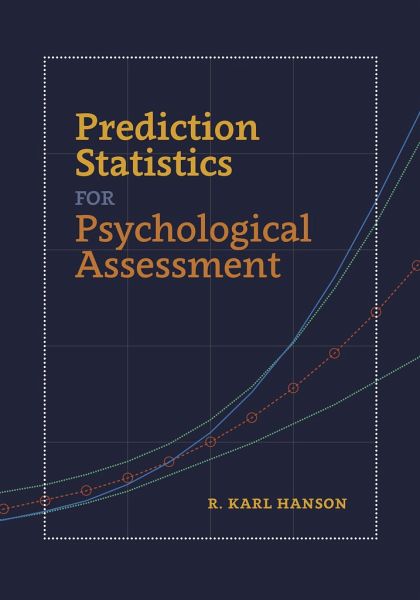
R Karl Hanson
Broschiertes Buch
Prediction Statistics for Psychological Assessment
Versandkostenfrei!
Versandfertig in über 4 Wochen

PAYBACK Punkte
38 °P sammeln!




A comprehensive survey of prediction statistics that illustrates the utility of prediction tools in applied psychological practice.
R. Karl Hanson, PhD is an adjunct research professor at Carleton University, Ottawa, Canada and formerly a researcher with Public Safety Canada from 99 -2 7. His research concerns risk assessment and rehabilitation for individuals in the criminal justice and forensic mental health systems, with a particular focus on sexual offenders. He has a strong interest in the statistical methods used to quantify risk and to evaluate change over time. Follow rkarlhanson and visit carleton.ca/psychology.
Produktdetails
- Verlag: American Psychological Association (APA)
- Seitenzahl: 448
- Erscheinungstermin: 14. Dezember 2021
- Englisch
- Abmessung: 253mm x 179mm x 24mm
- Gewicht: 762g
- ISBN-13: 9781433836411
- ISBN-10: 1433836416
- Artikelnr.: 61930315
Herstellerkennzeichnung
Libri GmbH
Europaallee 1
36244 Bad Hersfeld
gpsr@libri.de
Für dieses Produkt wurde noch keine Bewertung abgegeben. Wir würden uns sehr freuen, wenn du die erste Bewertung schreibst!
Eine Bewertung schreiben
Eine Bewertung schreiben
Andere Kunden interessierten sich für











